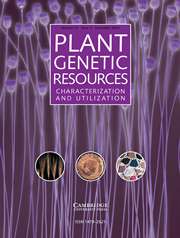No CrossRef data available.
Article contents
Comparative karyological features of several populations of Populus euphratica Oliv., grown under different environmental conditions in Iran
Published online by Cambridge University Press: 09 October 2024
Abstract
Understanding genetic structure and chromosomal characteristics is essential for developing effective breeding programmes and improving plant species. This research compared karyotypic features of 10 plant populations of Populus euphratica from various regions of Iran. Fresh roots grown from cuttings of the populations were used to get metaphase cells. Then several chromosomal parameters were recorded and analysed using a nested statistical model. All the studied populations were diploid, with 2n = 38 chromosomes, consisting of medium and sub-medium chromosome types. Significant differences (P ⩽ 0.01) were observed between the plant populations in chromosomal dimensions and arm ratios, suggesting chromosomal rearrangements. Chromosome lengths in the studied populations ranged from 0.69 to 3.38 μm. Intra-chromosomal index (A1) showed clear asymmetrical differences between the plant populations. Furthermore, using Stebbins's standards, the studied populations classified as 1A and 1B classes, demonstrated more asymmetry than those categorized as 1B and 2B, respectively. Cytological differences between the plant populations, collected from different parts of the country, showed that chromosome structural rearrangements are responsible for the speciation and adaption of the species against the mentioned variable ecological conditions and play a key role in response to diverse climatic and geographical conditions.
- Type
- Research Article
- Information
- Copyright
- Copyright © The Author(s), 2024. Published by Cambridge University Press on behalf of National Institute of Agricultural Botany


